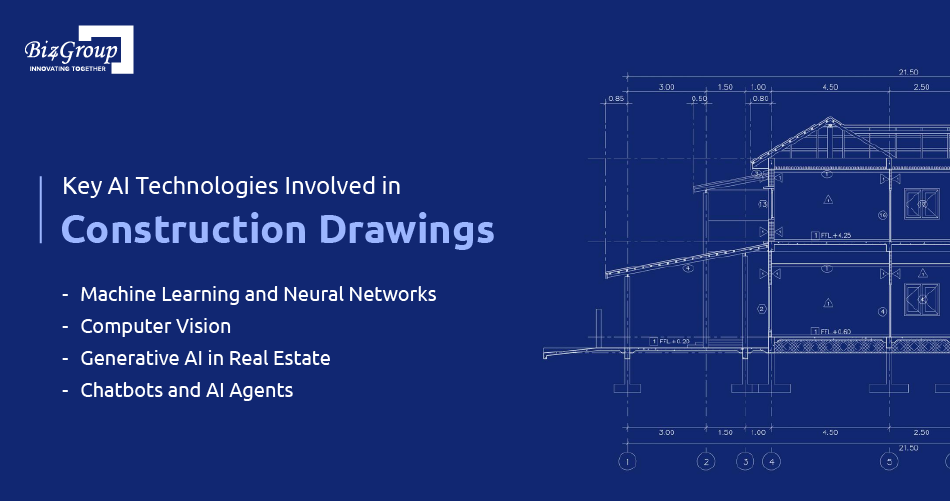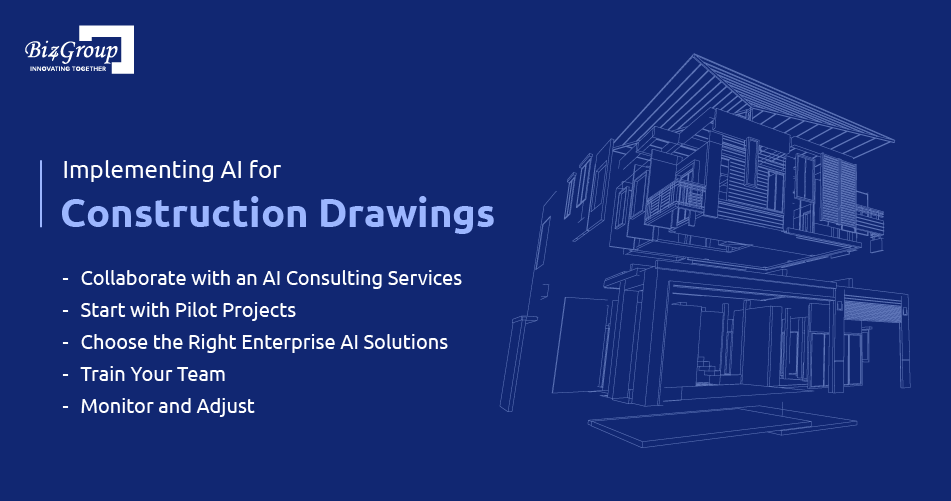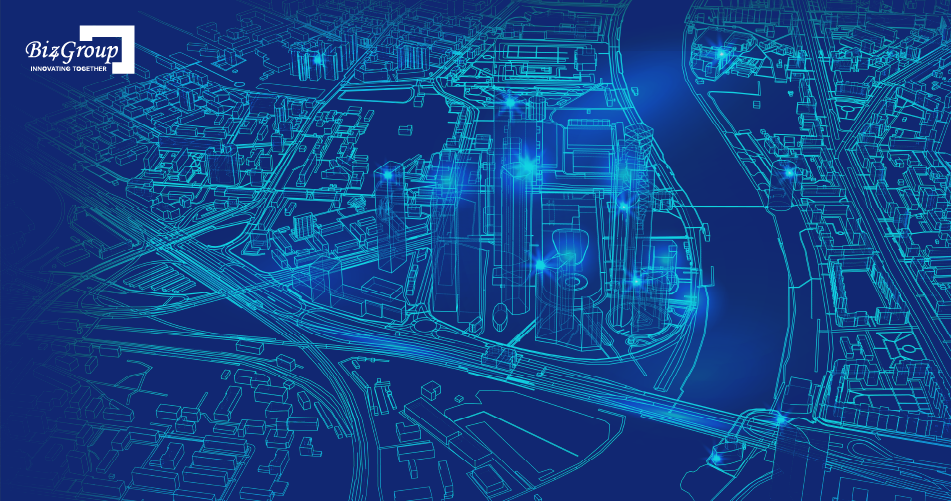Basic AI Chatbot Pricing: A simple chatbot that can answer questions about a product or service might cost around $10,000 to develop.
Read More
The construction industry is one of the fields that are witnessing a speedy shift, with AI being the key driver of the change. Industry wise, it is expected that by 2026, the industry will spend about $4 billion on AI, this speaks volumes about how much the industry relies on technology to drive efficiency.
Some related use-cases for AI include its presence in the real estate industry where chatbots are estimated to control around 28.98% of the market share. Right from handling intricate construction drawings to executing seamless project delivery, AI has asserted its impact. Today, numerous organizations rely on an AI software development company to incorporate these features into their operations.
Moreover, as seen by the surveys, 52% of the organizations are intent on using AI agents by 2025, reflecting the trend toward the widespread use of AI in the market.
With this in mind, let’s delve into the details of how AI is transforming the management of construction drawings.
The usage of AI is now a groundbreaking tool in the design process of construction drawings, and planning. These AI systems can also give real time interpretation and improvement of the architectural designs, since they can work independently to complete tasks that would require input from professionals.
AI tools do not just deal with large datasets but are capable of enhancing designs by automating design changes, such as blueprints.
For example, when an architect employs an AI tool for drawing in architectural designs, the architect produces more precise and efficient construction drawings. However, the utilization of these tools also reduces the potential for error, and guarantees that every detail is accounted for.
Real estate market requires that solutions be aligned with the architectural market, and in this regard AI is useful in the AI real estate solutions. This integration enables design, coordination, and execution of the project with less interference with time and other resources.

Here are some of the emerging advanced technologies regarding AI for construction drawings:
These technologies provide information on completed works and can assist in improving current designs. AI systems, using feedback from previous, both positive and negative, can create better construction plans.
Through this technology, AI is able to scrutinize such specifications and dimensions as laid down in the blueprints and 3D models for any possible mistakes and inconsistencies. This can help to check that all the designed element are well implemented on the construction site, as planned.
Generative AI in real estate can be applied to automate design tasks, whereby different designs can be generated, and the best one is chosen, depending on certain factors such as cost, materials, and environmental conservation.
As highlighted earlier, there is growing adoption of AI agents such that 52% of organizations are likely to adopt it by 2025. For instance, changes made to the original drawings or designs by architects or engineers can be communicated to the clients in real-time through chatbots.
Here are the major benefits to consider regarding AI for construction drawings:
Different tasks such as blueprint revisions, can be automated using AI, which saves a considerable amount of time for such manipulations. This makes it possible for the project to be delivered earlier and with little interference.
Timing might also be prevented from costly errors that could have been made during construction, if AI can be employed in real estate software to detect such mistakes in the plan, before the construction phase is initiated. This reduces the level of substandard work in the construction and eradicates costly reconstruction.

Through analysis, AI can forecast excess spending and advocate for an economic design approach. Custom chatbot solutions also reduce the handling of the query part as it offers real time updated status, cost, and time-line creep of the project.
AI enhances interaction between architects, contractors, and clients. With the help of AI, different team members can edit designs at the same time, and notice changes made by other members based on real-time results, thus, there are fewer miscommunications.

Here are the implementing strategies regarding AI for construction drawings:
For this, it is essential to engage a AI consulting services provider, when implementing the AI solutions within the existing processes. These specialists can assist in defining which AI tools, and approaches are the most suitable to use.
Before going big on AI, the best approach is to start small. This approach ensures that companies discover areas of strength, and weaknesses of using AI in specific work processes.
The contracts of enterprise AI solutions make the selection critical. The selected tools should meet the needs of the projects in construction, while being scalable and providing real-time information.
Lack of awareness of the availability and optimality of using AI tools and models require proper training, so that teams can appreciate and make efficient use of them. Educating the public, customers, suppliers, staff and other interests in the AI systems will enhance smooth implementation.
Big data and analytics must be monitored over time to determine that AI tools are performing optimally. Seek feedback on this process to be prepared to make alterations that will enhance the application of AI in construction drawings.

AI has brought additional efficiency to property valuation, which is crucial when deciding on construction. In this case, through an evaluation of a broad set of parameters, including land price, local market situation, and probable costs of the project, AI can provide better accuracy in estimated values, compared to the approaches used before.
This assists architects and developers in making better decisions with a view on the provision of resources, as well as planning structures that are viable and shall meet the set goals of each venture.
The automation of property valuation systems enhances the construction budgets and also assists in the detection of the changes in the future values, as influenced by economic changes. It is significant for extensive construction planning and feasibility analysis, especially for large construction projects that usually require large-sum investments and long-term constructions.
Besides, leveraging AI integration services, you can ensure to integrate these AI advanced tools into existing constructional and architectural processes.
Construction and real estate are some of the industries that are benefiting from the advanced implementation of AI in projects, such as construction drawings. Real estate AI software can track multiple designs, modifications, and enhancements in real time. The use of real estate AI software enables architects, engineers, and developers to work on the same platform and be in similar situations throughout the project delivery cycle.
The utilization of AI for construction drawings, frees up time and makes it easier for different teams to communicate, thus eliminating the likelihood of misinterpretations. These platforms can be updated instantly, revised automatically and depending on the different design scenarios, several economical solutions can be run at once.
Real estate chatbots have become a game-changer tool in construction practice, especially in AI for construction drawings, by changing how construction professionals communicate with the clients, contractors, and team members.
These AI controlled chatbots can respond to questions concerning construction drawings, project schedules, and progress reports instantaneously.
With real estate chatbot development, architects and contractors can be able to communicate with their clients in real-time, provide them with updates on the project, without having to wait for a meeting, and tackle any issues that the clients may have. It increases customer satisfaction and assists in managing projects to avoid, being slowed down by miscommunication.

Here are the future trends to consider for AI for construction drawings:
Over the years, AI has also started to penetrate construction, and as a result, incorporating it with those already existing construction management systems will follow suite. This trend makes it possible for the AI technologies to be able to interface independently with other project management tools, thereby enhancing their effectiveness.
AI will be merged with 3D printing technology in the future, and this will make architectural designs more intricate, and environmentally friendly. Such a trend will make it possible for architects to deliver detailed designs that are personalized within the shortest time possible, and at the same time enhancing both the looks, and functionality of the whole structure.
Safety standards will also improve for AI, which will help architects and builders to visualize all the obstacles to incorporate it in design phases. The use of AI will involve being able to forecast the durability of different materials, and suggesting the most appropriate design technologies for such specific elements.
As the number of AI apps for real estate grows, architects and developers will be able to plan and execute all aspects of a project, including drawings and completion, within one platform.
with Biz4Group today!
Our website require some cookies to function properly. Read our privacy policy to know more.